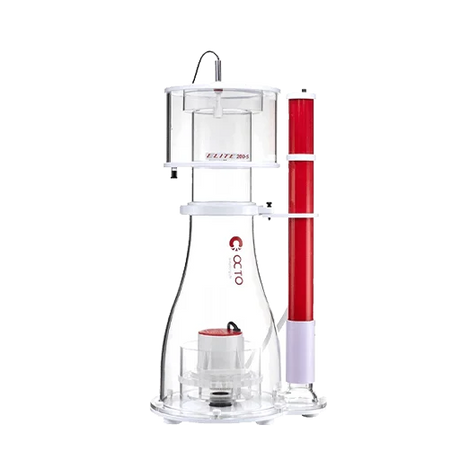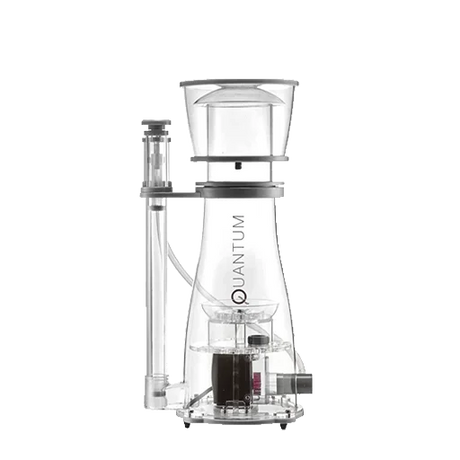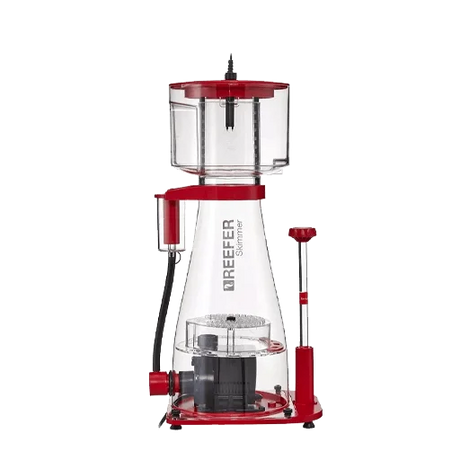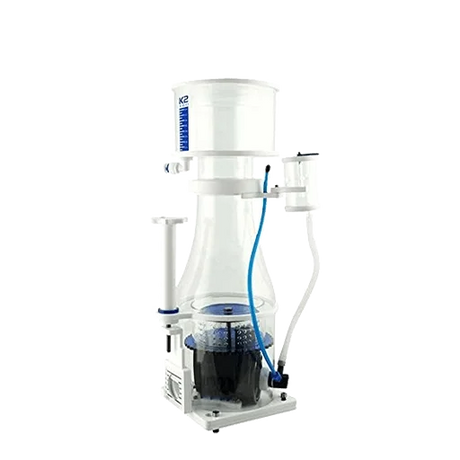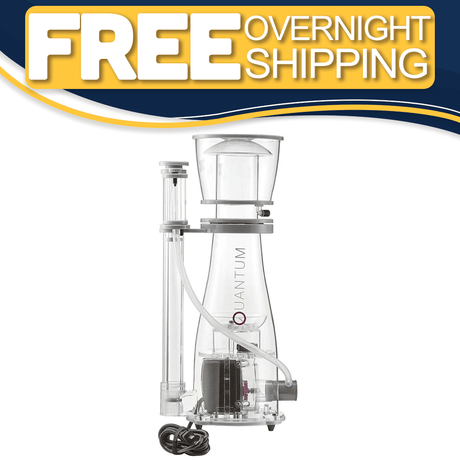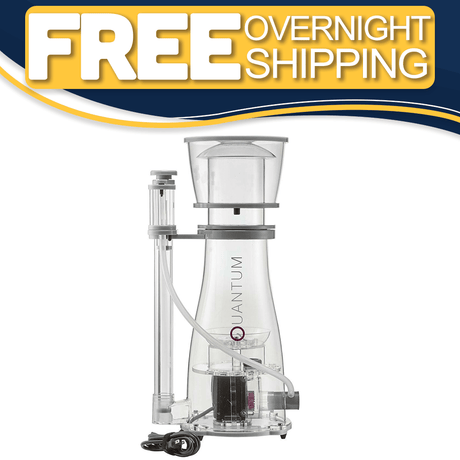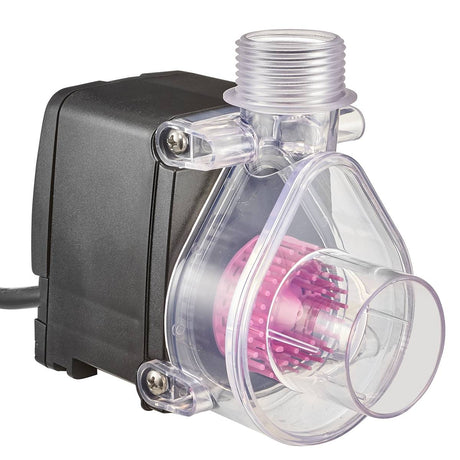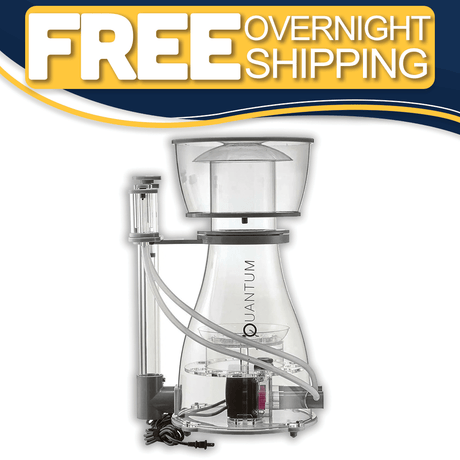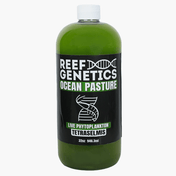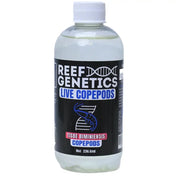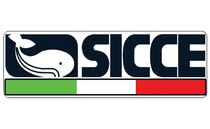Dive Deeper: Info & Tips for Nyos Protein Skimmers
Nyos skimmers are a trusted favorite among reefers looking for quiet, efficient, and consistent nutrient export. Known for their solid build quality and sleek design, the Nyos Quantum series offers powerful performance without taking up too much space in your sump — making them a great fit for both medium and large reef systems.
These skimmers are built with high-quality acrylic, ultra-smooth impellers, and fine-tuned air-water mixing for dense, stable foam production. Whether you're dialing in your first skimmer or upgrading to something more capable, Nyos delivers dependable results with minimal noise or tuning headaches.
Choosing the Right Nyos Skimmer for Your Reef
Nyos Quantum 120
Ideal for tanks up to ~120 gallons. Compact footprint and low energy draw make it a solid option for nano to mid-size reef systems. Easy to dial in and fits into tighter sump chambers.
Nyos Quantum 160
Best for medium-sized aquariums in the 100–250 gallon range. Offers a good balance between footprint and skimming power. Great for mixed reefs with a moderate to high bioload.
Nyos Quantum 220
Built for larger setups (up to ~500 gallons). Features a more powerful pump and taller reaction chamber, allowing for higher throughput and improved nutrient export in heavily stocked tanks.
Nyos Quantum 300
Designed for serious reefers with large tanks or heavy bioloads. Rated for systems up to 1,000 gallons, the 300 delivers commercial-grade performance in a relatively compact form factor.
Key Features Across the Line:
- Titanium Screws & Silicone Dampening Feet: Corrosion resistance and quiet operation.
- Tool-Free Disassembly: Easy maintenance without needing screwdrivers or tools.
- Twist-Lock Collection Cup: Secure seal and quick removal for cleaning.
- Optimized Venturi & Hybrid Wheel Impeller: Stable foam generation and efficient skimming, even in fluctuating water conditions.
Optimizing Skimmer Performance
- Let the skimmer break in properly:
Nyos skimmers typically require a short break-in period (a few days to a week) after installation. During this time, it's normal for foam levels to fluctuate as oils from new equipment wear off. - Adjust water level and air intake carefully:
Nyos skimmers work best in sump water levels between 7–9 inches. Use the built-in adjustment dial to fine-tune the internal water height and air draw for optimal foam production. - Don’t overclean the neck:
While it’s important to empty and rinse the collection cup regularly, avoid scrubbing the neck too frequently. A thin biofilm actually helps maintain stable foam formation. - Monitor foam consistency:
You want a dense, stable foam that rises steadily into the collection cup. If it’s too watery or frothy, make small adjustments to the water height or airflow — and give the changes a little time to settle. - Pair with good mechanical filtration:
A skimmer performs best when it isn’t overwhelmed with detritus. Make sure filter socks or roller mats are doing their job upstream to improve water clarity and skimmer efficiency.
Expert Tips
- Use a consistent feeding schedule
Nyos skimmers respond well to stable nutrient input. Keeping your feeding routine consistent allows your skimmer to perform more predictably, reducing the chance of wet skim or overflow. - Elevate your skimmer if needed
If your sump water level is too low, use a skimmer stand to raise the unit into the ideal 7–9 inch range. Nyos performance can suffer if the water level is too shallow or fluctuating. - Add a CO₂ scrubber to the air intake
If you're dealing with low pH, consider connecting a CO₂ scrubber to your skimmer’s air intake. Nyos models are compatible with this upgrade and it can make a noticeable difference in pH stability. - Watch for signs of over-skimming
If your skimmer is pulling unusually clear water or you find yourself emptying the cup too frequently, reduce air or water level slightly. You want dark, concentrated skimmate — not tea-colored water. - Maintain stability after water changes
Skimmers can behave differently after a large water change due to changes in surface tension. Let the system settle before making aggressive adjustments, especially within the first 24 hours.
Installation & Maintenance
Initial Setup:
- Place the skimmer in a stable section of your sump with a consistent water level (7–9 inches is ideal).
- Make sure the outlet is unobstructed and flows freely back into the sump.
- Attach the air intake silencer and route the airline away from splash zones.
Startup Checklist:
- Ensure all components are seated correctly and the pump is running smoothly.
- Adjust the water level using the control dial so that foam begins forming in the neck after a few hours of run time.
- Expect a short break-in period where the skimmer may produce inconsistent foam or wet skim.
Routine Maintenance (Every 3–6 Months):
- Collection Cup: Empty and rinse the cup at least once a week, or more frequently in high-nutrient systems.
- Skimmer Body & Pump: Disassemble the unit, soak parts in a vinegar solution (or citric acid), and scrub off buildup. Be gentle around the impeller and hybrid wheel.
- Air Intake: Check the airline and venturi for salt creep or blockages. A clogged air path can drastically reduce performance.
- O-Rings & Fittings: Inspect all rubber seals and fittings for wear or cracking, and apply silicone lubricant if needed.

